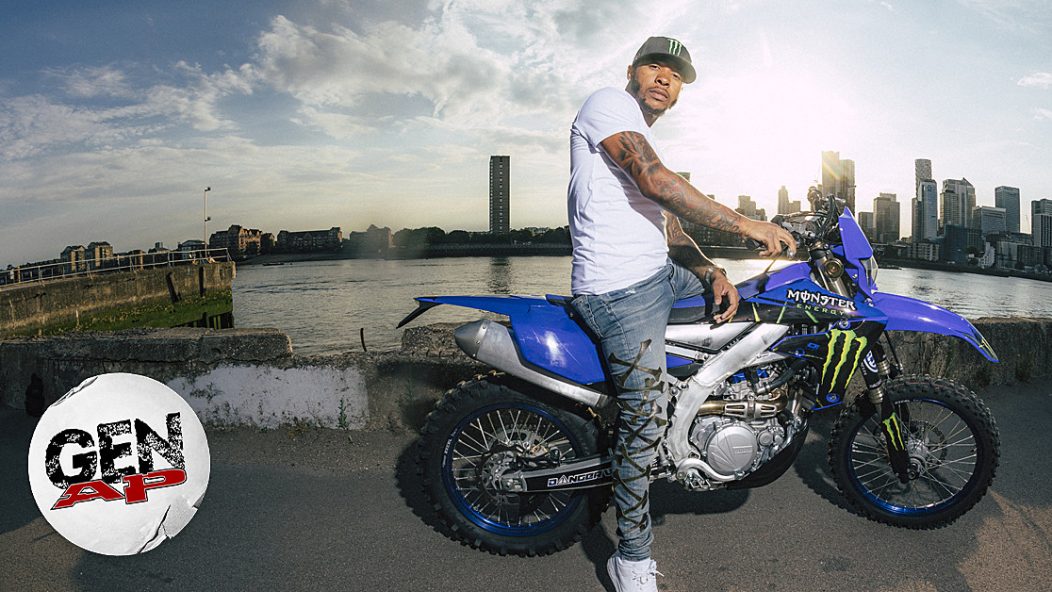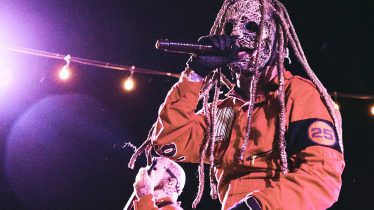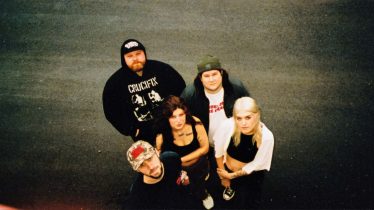
How Meek Mill helped Chino Braxton bridge the gap between dirt biking and music
Welcome to Generation AP, a weekly spotlight on emerging actors, writers and creatives who are on the verge of taking over.
Life started with ride-outs on dodgy dirt bikes in the deepest parts of Baltimore and led fast to wheelies in hip-hop videos and an acting role for Will and Jada Pinkett Smith. There was little time for a childhood after Chino Braxton gained his first sponsor at 15. So when Meek Mill signed Braxton to his record label, Dream Chasers, the connection between dirt bikes and music was cemented. “Meek played a big role in bridging the gap between the two cultures, as he already had an interest in dirt bikes before he made it rapping,” Braxton says from his penthouse suite in Shoreditch. For the young dirt biker, this was a mentorship, one that gave him opportunities he might otherwise never have encountered.
Now that dirt biking is touching the mainstream, Braxton is working hard to form his own league in the sport, founded on the years of experience he has gained. But the raw and maligned subculture doesn’t fit easily with the rules and regulations necessary for a sporting event. In fact, by following the 200-strong pack around the streets of North London, we witnessed a fast-paced culture that’s difficult to document.
Read more: Meet Terrill Jefferson, the seasoned skateboarder who’s launching his own clothing brand
On a hot weekend in July, Braxton was in the capital to link up with One Wheel Wavey, a London-based rider who documents his experiences in the bike life scene on YouTube. Together, they’re working to form a dirt biking league and bring sponsors to the subculture.
But after repeated accidents involving dirt bikes, the scene is under scrutiny from the media. Now more than ever, the subculture must talk about how to elevate itself to the status of a sport, where it can take place off the main roads and in safer environments.
“My goal is to turn this into a league, to make a way for kids who grow up where I’m from to gain sponsorships and make it to the next level,” Braxton explains. “I want to give back.” His new surroundings are testimony to how sponsorships have already begun to elevate the sport in ways Braxton couldn’t possibly have foreseen when riding a dirt bike around Baltimore at the age of 15.
Aside from sponsorships, the largest barrier preventing dirt biking from forming a league is the fact that historically, riders haven’t always worn helmets. While little research has been done into the use of helmets among dirt bikers in Baltimore, there are studies on cycling that present statistics that are troubling for minority communities, finding Black and indigenous people two to four times more likely not to be wearing a helmet when compared to their white counterparts. “We had people thinking it’s illegal and that we don’t wear helmets,” he says. “But I wear a German-style helmet. Kids would put helmets on if they could see the opportunities.”
![[Photo by James North]](https://www.altpress.com/files/2022/08/attachment-James-North-6.jpg?w=630&h=420&zc=1&s=0&a=t&q=89) [Photo by James North]
[Photo by James North]
Perhaps there will be no need for strict rules and regulations if the kids will follow Braxton’s lead out of sheer idolatry. “Everybody in Baltimore, and other places across the world, wants to be the next ‘me,’” Braxton says confidently.
Getting slowly used to his new Shoreditch penthouse surroundings, Braxton is a little overwhelmed. Every move is documented on social media, from an energy drink placed next to a room-service phone to a casual hotel exit into the whip. He even brought along his own videographer, MrBizness, a veteran of the U.S. scene who rides on the back of a bike and shoots bike-life action the only way possible: from amid the pack. From the penthouse to the plush whip and bling, it’s clear that dirt biking culture takes inspiration from the swagger of hip-hop and its well-worn rags-to-riches narrative.
But the whole operation wasn’t always this polished. Braxton’s “Day in the Life“ documentary — which has 13 million views on YouTube — was recorded at a time when he was unaware of the full potential of social media. “When that video first dropped, social media wasn’t as popping, so that is one of the things that took me up,” he recalls.
Braxton regularly receives DMs from kids, some of whom watched his “Day in the Life” at school. At 25, he’s not much older than many of these fans in their early 20s. He started riding a dirt bike at the age of 5, did his first wheelie at 10 and found his first sponsor at 15. “Back then, I really didn’t understand the business side of it. I was just going with the flow and riding.”
Social media also gave Braxton the confidence to branch out into music himself. “I tried rap, but it wasn’t my thing,” he notes. After gaining a following through dirt biking, he had the perfect platform from which to share his new work. “I felt like I could do it because of the environment I was in, but riding a dirt bike is definitely easier.”
As he approaches his late 20s, Braxton has a lot to say about the Baltimore community he was raised in and in which he experienced gun violence and the tragic loss of close friends. His time away from the U.S. gave him an opportunity to reflect from a distance about the struggles of growing up there and how many young men from his area both distrust mental health services and feel skeptical about opening up to a complete stranger: “I was always against therapy, so when I first did it, I thought I wasn’t going to open up.”
But after not leaving his room for two days on a trip to LA, Braxton decided that it was time to seek help. “I did seek help for my mental health because there was a time when I was just stuck. I had so much on me. I was just being quiet,” he says with a melancholy lilt.
Read more: A front-row seat at Kenny Mason’s electrifying Capitol Hill Block Party performance
After surviving being shot in the head and losing people close to him to gun violence, Braxton supports the call for “bikes up, guns down.” There is still a lot of work to do to encourage other local people to seek help with mental health services: “We definitely suffer from PTSD in our communities. We go through a lot of stuff that we don’t touch on, and we keep a lot bottled up because we feel we can’t trust nobody. Me doing therapy helped me open up more, but going across the world and hearing other people’s stories through dirt biking also helped.”
As the subculture wakes up to this mental health crisis, it takes a crucial step forward on the path to becoming a sporting league. Braxton gives visibility to the sport and his community and presents it as a positive outlet for young people, something that’s bound to move the subculture forward.
If you don’t allow this wheelie-obsessed subculture into the venues, then it will take place in the streets, elevated and revered in hip-hop videos that garner millions of views. By going live on Instagram during his ride through London, Braxton took control of the narrative and showed exactly what happens out there on the roads, in the moment. Little is planned, and he prefers to act on instinct rather than considering tricks ahead of time. Like many rappers and grime artists before him, he’s grasping the means of communication, creating his own channels and thriving. Caught between exhilarating live feeds and mainstream-media sensationalism, the narrative on dirt biking is still very much in progress.








